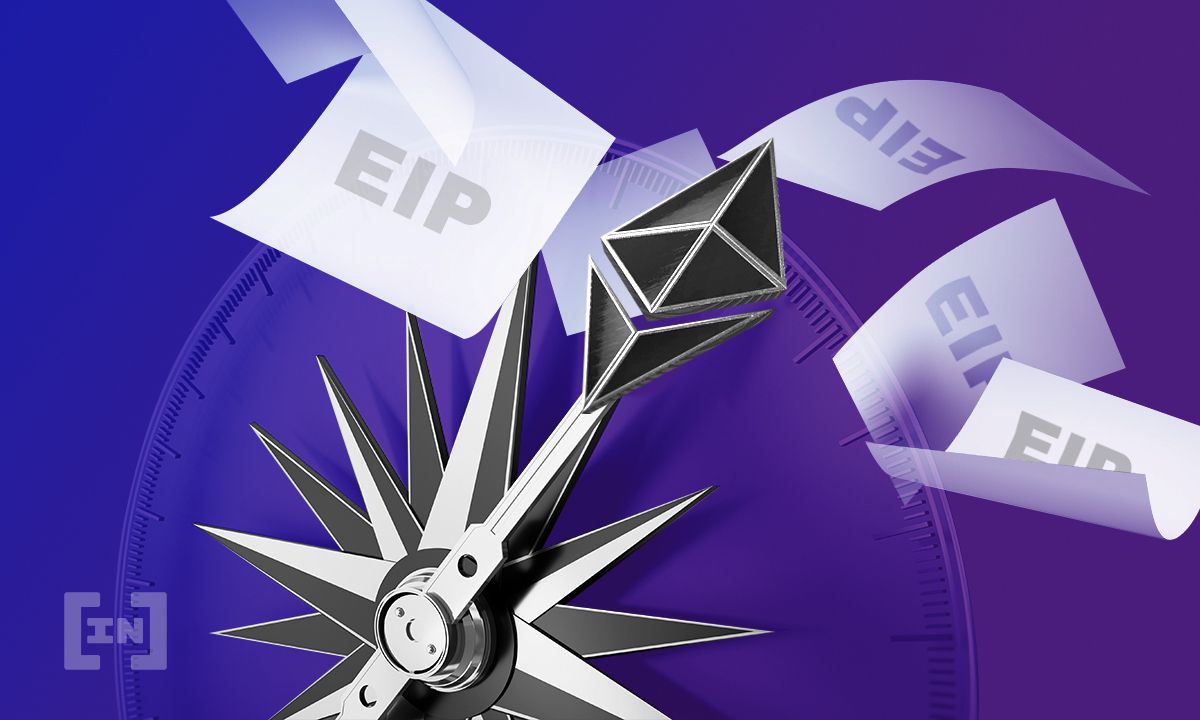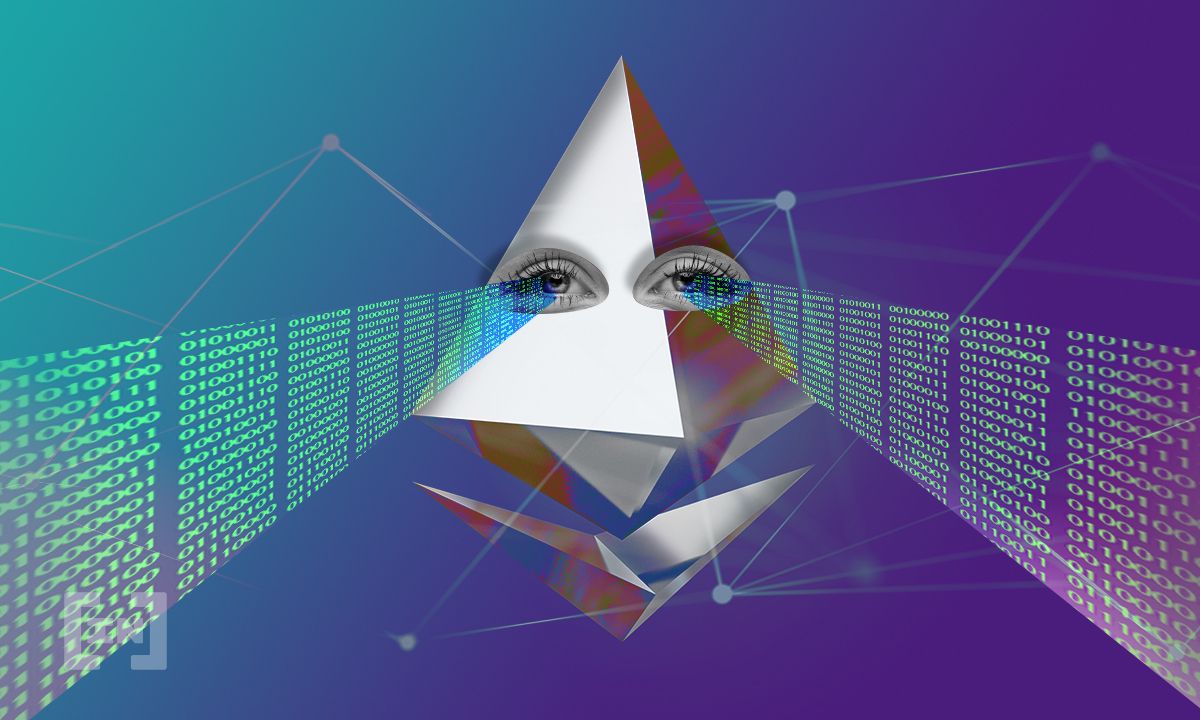The problem of high gas fees has plagued Ethereum for years now, and multiple developments have been proposed to solve the problem. Some of these are layer 2 solutions, while others are more fundamental changes to the network.
One of the changes is EIP-4488, an upgrade that plans to lower gas fees through several interesting mechanisms. In this guide, we explain what EIP-4488 is and how it works.
In this guide:
Ethereum and the gas fees woes

Gas is the fee required to perform transactions and any other action on the Ethereum network. Each type of transaction costs different amounts of gas, and this depends on the complexity. A simple transfer of ETH takes less gas than transferring ERC tokens or swapping assets on an Ethereum native DEX (decentralized exchange).
Each block in the network has a gas limit. If a block isn’t within the gas limit, it becomes invalid. The gas limit for blocks can change over time, depending on many factors. Therefore, transactions may not always end up in the same block at any given time.
Miners verify transactions by choosing those that have the highest gas fee first. The gas fees act as a bidder for block space. When a larger number of users bid on a smaller block of space, this dynamic can lead to high network fees.
What causes the high Ethereum gas fees?
The important aspect to remember is that gas fees are not dependent on the transaction size. They depend on how many transactions are made on the Ethereum network at the same time. For example, if your transaction is processed during busy periods, you could end up paying hundreds of dollars just to get the transaction through. This is one of the core issues with the proof-of-work (PoW) Ethereum network, which can only process around 30 transactions per second.
During peak hours, users will end up paying higher gas fees to ensure that their transaction is processed. If a user fails to pay sufficient gas fees, their Ethereum transaction may fail. If this happens, the transaction will not be completed, and the user will still be charged the gas fee.

On countless occasions, the Ethereum network became overwhelmed with transactions, causing fees to soar to an astronomically high level. One of the first moments that proved how the Ethereum network can get congested was during the 2017 CryptoKitties craze. The big NFT boom of 2021 also brought a lot of new users to Ethereum, which caused gas fees to skyrocket. We’ve seen this happening during project launches, such as the Yuga Labs’ Bored Ape Yacht Club (BAYC).
The Ethereum Foundation has plans to switch to a proof-of-stake (PoS) by the end of 2022, and the network will be known as Ethereum 2.0. This will improve the network’s scalability and lower gas fees. While we are not there yet, there are other measures on the way that are paving the way toward lower fees. EIP-4488 is one of the proposed steps.
What is EIP-4488?

The EIP-4488 is an Ethereum Improvement Proposal called “Transaction calldata gas cost reduction with total calldata limit.” It was introduced in Nov. 2021 by Vitalik Buterin and Ansgar Dietrichs, focusing on bringing down transaction costs for Ethereum rollup solutions such as Optimism, Arbitrum, and zkSync.
In this proposal, Buterin and Dietrichs outlined the steps to reduce gas prices without compromising security and the roadmap for moving forward with the development of Ethereum 2.0.
The main ideas presented in the EIP-4488 proposal are:
- Group layer 2 rollups users’ transactions in bulk and post them via “calldata.” The upgrade will reduce the cost of posting calldata onto the mainnet, further driving down the end user’s gas fees.
- Socializing gas costs across multiple transactions has already resulted in transaction fees dropping by 3-8x. ZK-rollups are 40 to 100x cheaper than the Ethereum base layer. Buterin believes that increasing data space will “decrease rollup costs by 5x.”
- Rollups would be the best solution for scaling Ethereum in the short, medium, and long term. The blockchain will scale further by adding sharding to Ethereum’s PoS network. This will make it easier to do layer 2 rollups and reduce transaction costs. Read more on sharding in the subsequent EIP-4844 proposal.
It is vital to keep the block size small for decentralization so that anyone can run a node. But currently, Ethereum block sizes are manageable, and any upgrade, such as the EIP-4488, will not increase maintenance costs.
Note that the EIP-4488 proposal doesn’t directly reduce layer 1 data. However, it supports rollups, which balance the cost of execution while maintaining a similar maximum capacity.
Data availability is another major scaling issue for the Ethereum network. But the EIP-4488 solves this, as it offers relief to layer 2 protocols.
Impact of EIP-4488 on the network
EIP-4488 is a predecessor to EIP-4844, and it had a simpler approach to solving the high transaction fees problem. EIP-4488 introduces two important aspects:
- Calldata gas costs have been reduced from 16 to 3 gas per byte
- 1 MB per block and 300 bytes for each transaction (maximum 1.4 Mb) to mitigate security risks.
EIP-4488 primarily targets calldata, a read-only byte-addressable space where the data parameter of a transaction or call is being held.
In other words, EIP-4488 would limit the total transaction calldata, where data from external calls to functions are stored, before reducing the calldata gas cost to remove the possibility of breaking the network.
The hard limit is the easiest way to ensure that an increase in average caseloads does not lead to an increase in worst-case loads. Rollup costs would rise dramatically, increasing the average block size to hundreds of kilobytes. However, the hard limit would prevent the worst-case scenario of single blocks containing 10 MB. The worst-case block size would actually be smaller than it is now (1.4 MB vs. 1.8 MB).
According to Buterin,
“the calldata gas cost from 16 to 3 would increase the maximum block size to 10M bytes. This would push the Ethereum P2P (peer-to-peer) networking layer to unprecedented levels of strain and risk breaking the network; some previous live tests of ~500 kB blocks a few years ago had already taken down a few bootstrap nodes.” He also mentioned that the “decrease-cost-and-cap proposal” would increase the maximum block size to 1.5 MB. This “will be sufficient while preventing most of the security risk.”
You can find the EIP-4488 discussion here. The proposal was implemented on an Ethereum testnet, and the latest results can be found here.
Concerns for EIP-4488
It’s important to note that node operators would face increased workloads simply by increasing data space. The blockchain’s entire database would be a burden too big for most computers to store. However, this problem could be solved by a complementary proposal that would offload the responsibility of storing blocks for nodes older than one year.
How will EIP-4488 help users?

The EIP-4488 proposal would directly affect users, as it would decrease the cost of rollups and would lower layer 2 gas fees.
EIP-4488 was presented as a short-term solution to Ethereum’s high gas fees. Users of layer 2 solutions such as Optimism and Arbitrum would see transaction fees go down 3–8x. Users of zk-rollups could pay gas fees up to 40–100x cheaper than on Ethereum’s base layer.
However, some developers expressed concern about the ever-increasing transaction data. The EIP-4488 upgrade implies that the overall block size will increase, which is an issue in the long term. If this upgrade gets implemented, the size of the Ethereum blockchain increases at a rate of 0.1Mb to 0.5Mb per block. This represents a 5x increase rate of the chain’s size growth. This could pose an issue with users looking to become nodes, as they will need better hardware.
Another concern is that the EIP-4488 upgrade may cause additional network limitations. Users might need to pay higher fees to outbid rollups transactions competing for the same calldata space.
EIP-4488, one of many strategies to lower ETH fees
The EIP-4488 proposal was created to lower transaction costs for rollup protocols built on the Ethereum blockchain. EIP-4488 was an intermediary proposal while the network was waiting on the sharding solution, which was introduced by EIP-4844.
However, the main update everyone is waiting for and which is expected to solve Ethereum’s scaling problem is the switch from a PoW to a PoS blockchain. This will almost certainly end the gas fees issues, so users will not have to wait too long before they get their wishes either way.
Ethereum Improvement Proposals are not something you can understand with just one glance. If you want it explained to you, head to the BeInCrypto Telegram group and ask the smart folks over there.
Frequently asked questions
What are EIPs?
What is EIP-4488?
Disclaimer
In line with the Trust Project guidelines, the educational content on this website is offered in good faith and for general information purposes only. BeInCrypto prioritizes providing high-quality information, taking the time to research and create informative content for readers. While partners may reward the company with commissions for placements in articles, these commissions do not influence the unbiased, honest, and helpful content creation process. Any action taken by the reader based on this information is strictly at their own risk. Please note that our Terms and Conditions, Privacy Policy, and Disclaimers have been updated.




